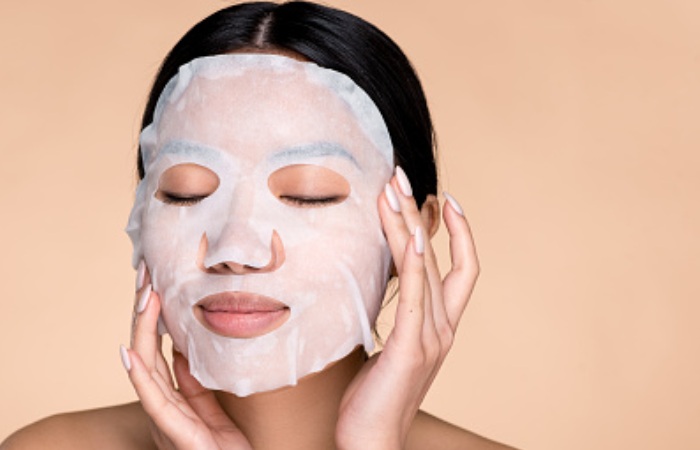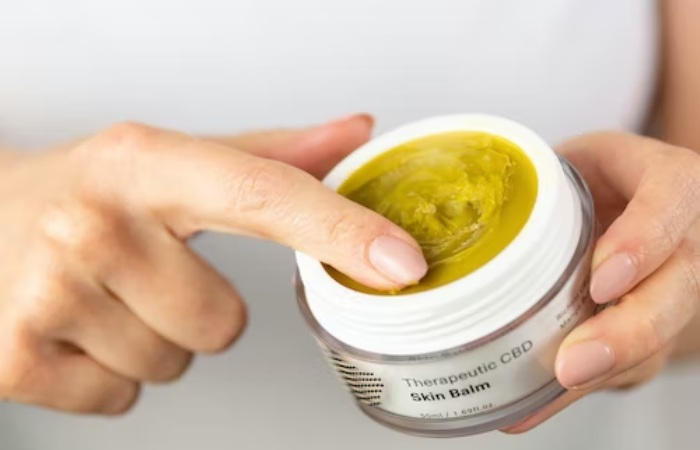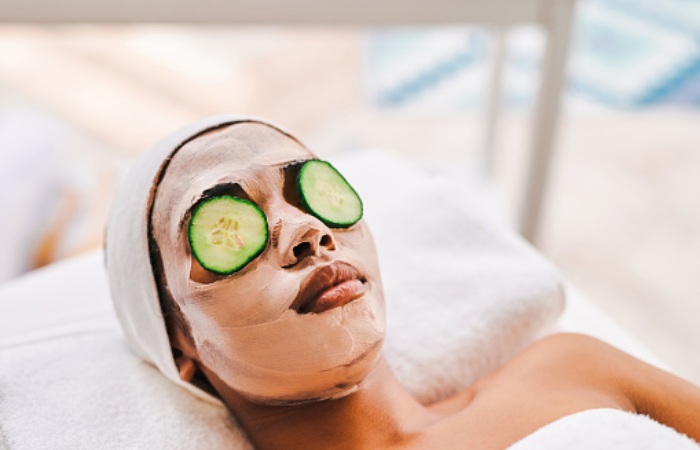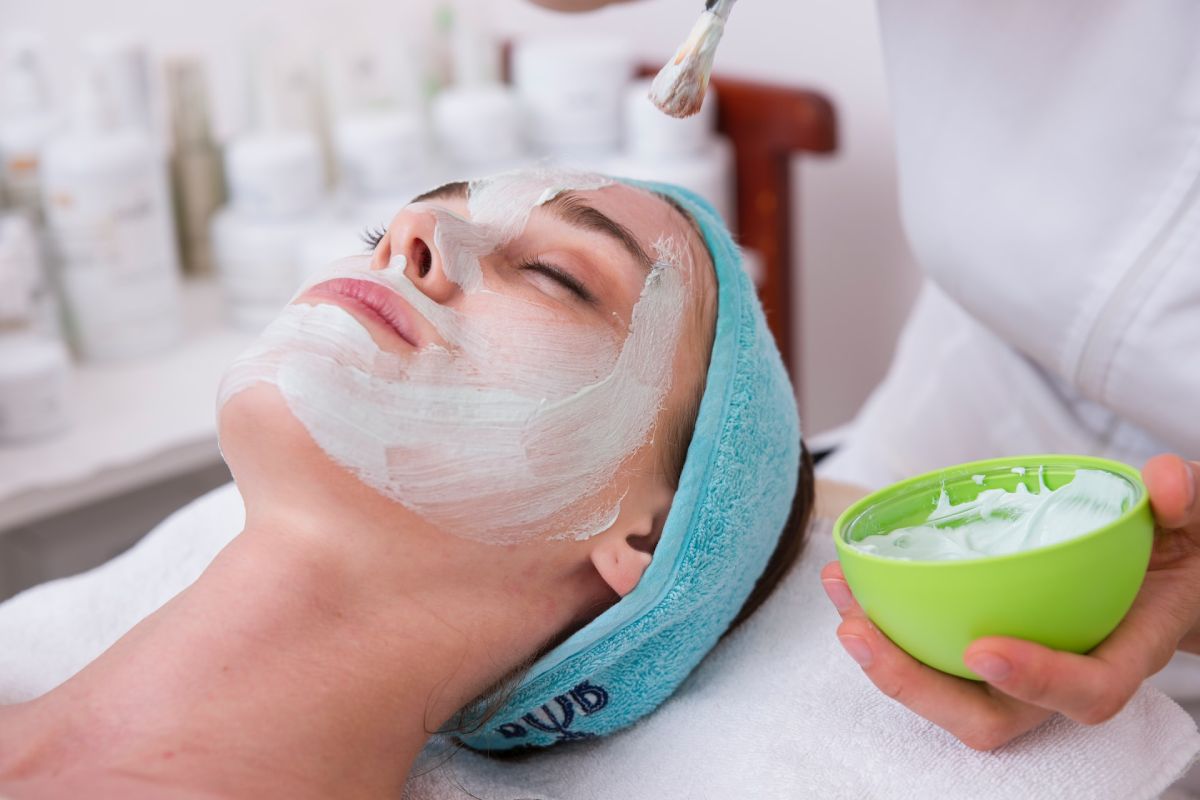Salicylic Acid Mask Ordinary

Applying a face mask is the most calming phase in the skincare procedure. A skincare enthusiast may or may not use a toner, serum, or facial oil, but most utilize face masks. Because of this, today’s topic will be a salicylic acid face mask
Salicylic acid is a BHA (beta hydroxy acid) having antibacterial, anti-inflammatory, and exfoliating qualities. An oil-soluble BHA can help exfoliate dead skin cells and lessen congested pores. Therefore, since you are mixing salicylic acid in the form of a face mask, having a salicylic acid face mask in your regimen might also be a minimalist strategy.
To begin with, let’s define salicylic acid. Cosmetic chemist Ron Robinson claims the salicylic acid source, a salicylate, is willow bark. Its structure is a little complex, but understanding why (and how) it functions so effectively is crucial.
Two kinds of acids frequently use in skin-care products: beta hydroxy acids (BHAs) and alpha hydroxy acids (AHAs). According to cosmetic scientist Randy Schueller, beta hydroxy acid is a salicylic acid. Because of this, the molecule’s hydroxyl and acid components are separated by two carbon atoms rather than one, as in alpha hydroxy acid.
What does a Salicylic acid Mask do?

A beta hydroxy acid having antibacterial properties is salicylic acid.
Salicylic acid can work deep inside your skin. This characteristic makes it a very effective component for treating acne, particularly blackheads and whiteheads.
Schueller and Dr Wesley claim that the chemical can permeate the skin so deeply that it destroys the bonds that unite skin cells. According to Schueller, the acid component of the molecule “may destroy some of the intracellular ‘glue’ that binds skin cells together after it has pierced the epidermis.
Table of Contents
Is a Salicylic Acid Face Mask Good?

Acne’s adversary has a well-earned reputation for preventing outbreaks. Here, you’ll find all the details you need on what it is, how it works, and how to include it in your skin-care routine.
Our editors choose all of the goods featured on Allure on their own. However, we could receive affiliate compensation if you procure through one of our retail links.
Salicylic acid is one of the majority important substances you should be aware of in the over-the-counter fight against breakouts. Said salicylic acid is one of the main foes of acne. You reach for some spot medicine. You quickly see a zit creeping on your face. If you apply it to a spot overnight, you can wake up with a dried-up, much less apparent pimple in the morning. But what does salicylic acid do to the skin, and how can you use it?
To find out, we consulted board-certified dermatologists to help break down exactly how salicylic acid works on the skin, who should (and shouldn’t) use it, and why it’s a cornerstone ingredient in the battle against breakouts.
Salicylic Acid Mask Uses

Exfoliates Skin
Salicylic acid is regarded as the ideal ingredient for the best exfoliation. The dullness and texture of the skin can be improved by sloughing off dead skin cells.
Removes Excess Oil
Salicylic acid can penetrate beneath the skin’s surface to eliminate extra sebum from pores and decrease oiliness since it is oil-soluble.
Whiteheads and blackheads are avoided
Salicylic acid treats current outbreaks and specifically attacks white and blackheads. It stops them from rising to the skin’s surface again.
Softens Clogged Pores
The oil-soluble component can enter the pores and extract the debris from blocked pores that cause whiteheads and blackheads, which are the first signs of superficial acne.
Salicylic Acid Mask for Acne

Salicylic acid is a beta-hydroxy acid. It is recognised for clearing up acne by removing dead skin cells and keeping pores clean.
Salicylic acid is included in some over-the-counter (OTC) products. Moreover, prescription-strength formulations are offered.
Salicylic acid is a beta-hydroxy acid. It is recognised for clearing up acne by removing dead skin cells and keeping pores clean.
Salicylic Acid Mask Side Effects
Salicylic acid is a beta-hydroxy acid. It is recognised for clearing up acne by removing dead skin cells and keeping pores clean.
salicylic acid acne treatment
Salicylic acid includes some over-the-counter (OTC) products. Additionally, prescription-strength formulations offer.
For moderate acne, salicylic acid works best (blackheads and whiteheads). It may also aid in avoiding recurrent outbreaks.
salicylic acid masks side effects
Salicylic acid generally regards as harmless; however, it might initially irritate the skin. Additionally, it could remove too much oil, leaving you feeling dry and perhaps irritated.
The following other negative consequences are possible as well:
itching or tingling of the skin
hives or peeling skin
Before taking salicylic acid, be aware of the following precautions:

Salicylic acid is available over the counter (OTC), but you should see your doctor before taking it. You may get it at your neighbourhood food shop. Discussion points to be made include:
Any allergies to salicylic acid or other topical drugs should disclose to your doctor.
Use with kids: Skin irritation may be more common in children. Before introducing your kid to products containing salicylic acid, see a physician.
Drug interactions: Salicylic acid and several medicines don’t get along. Tell your doctor about all of the drugs you are taking right now.
The following medical issues should also disclose to your doctor as they might influence their choice to recommend salicylic acid for you:
liver illness
renal illness
cardiovascular disease
diabetes
chickenpox (varicella) (varicella)
flu (influenza) (influenza)
Conclusion
Beta-hydroxy acid (BHA), and salicylic acid (SA), helps the skin’s natural exfoliating process. Salicylic acid was previously made from white willow and wintergreen leaves but is now mostly made in a lab. This chemical was employed for a very long time to treat various conditions, such as keratosis pilaris, plugged pores, and psoriasis-like disorders. This chemical’s gentle yet powerful exfoliating characteristics can be utilised as a part of your skincare regimen.

